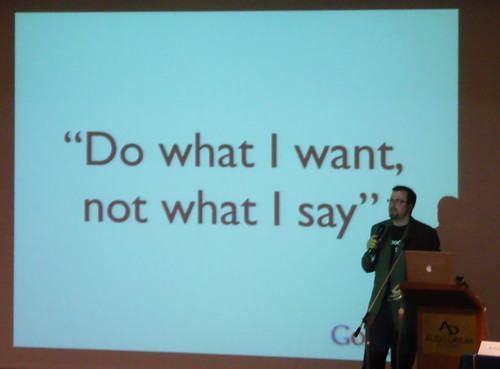How is this even important if you first dont have a culture that believes in fundraising internally? What if you have staff that may not even be aware that you are a nonprofit? What do you do when staff and/or board dont understand why they would donate to your org? Or what if there is no general consensus across your organization of what your cause is and why donations matter to it? What happens when we get comfortable with our budget, find other methods for income and the immediacy of fundraising falls a little?
I dont expect that too many fundraising campaigns, no matter how perfect they are, would succeed with some of the above conditions existing. I think I may have just asked too many questions that are too hard to solve and that people dont want to address. It is just easier to build a campaign, implement the tools, etc. And just tell the staff that fundraising is part of their job and is important to the mission. But is that enough?
At the core most people at the full time level understand basic fundraising, how to build a relationship and even understand most of the tools. But there is a difference between loving an organization enough to work there (for little pay) and understanding the cause the organization is fighting for enough to ask other people for money to support it.
One of the struggles that the YMCA faces is that we have a rich, long history and a very wide range of programs and services which makes it hard to explain our root cause. That history and depth of community involvement is one of our greatest strengths also, we have phenomenal brand recognition, huge support and expertise in countless programs. But our staff, volunteers and members get so wrapped up in running a program, it is easy to forget why we offer it.
For example, swimming at the YMCA. When we were the first organization to create and offer progressive swim lessons, we did it because most of the population couldnt swim at all and noone was changing that. (Yes we really did invent progressive swim lessons). But why do we still offer swim lessons? Is it just cause we may have the only indoor pool in a community? Is it still to teach people to swim? Or is it tied to our greater goal of building Strong Kids, Strong Families and Strong Communities? Or is back to our core goal of building Christian values through programs that build Spirit, Mind and Body?
It is so easy to have a great set of programs and services that really do meet community, family and individual needs. It is great to keep running them and making a difference. But how do we bring a staff of 3,000 people, plus thousands more volunteers, together as a movement in Chicago to see the cause we are fighting for?
In my heart and soul I believe and fight for everything the YMCA is. I have my vision of our cause and it is very strong and more compelling than ever. Is that passion shared across my YMCA and others?
So now back to the NTEN book, sorry got carried away with another rant. Madeline Stanionis has a great set of seven steps to an online fundraising program in Managing Technology to Meet your Mission. She even acknowledges right in the beginning of the chapter the need for a cohesive, coordinated approach to fundraising. Multiple depts, staff and volunteers have to work together. Here are the seven steps that Madeline offers:
1. Plan
2. Dont Plan (even if it seems to contradict, it is so true!)
3. Put Your Website to Work
4. Accept Help
5. Think Campaigns, Not Appeals
6. Be Creative
7. Learn
Madeline offers actionable and reasonable advice, mixed with some great tips and examples. We all have a role to play in fundraising and leadership may have the biggest role of all, living the cause, hiring the staff and approving the strategy.
We all tend to get carried away with the newest tool, best way to make an appeal, but in the end we all need to spend time making sure our staff understand what we are fighting for, the difference we are making, why our work matters and the role they play.





















